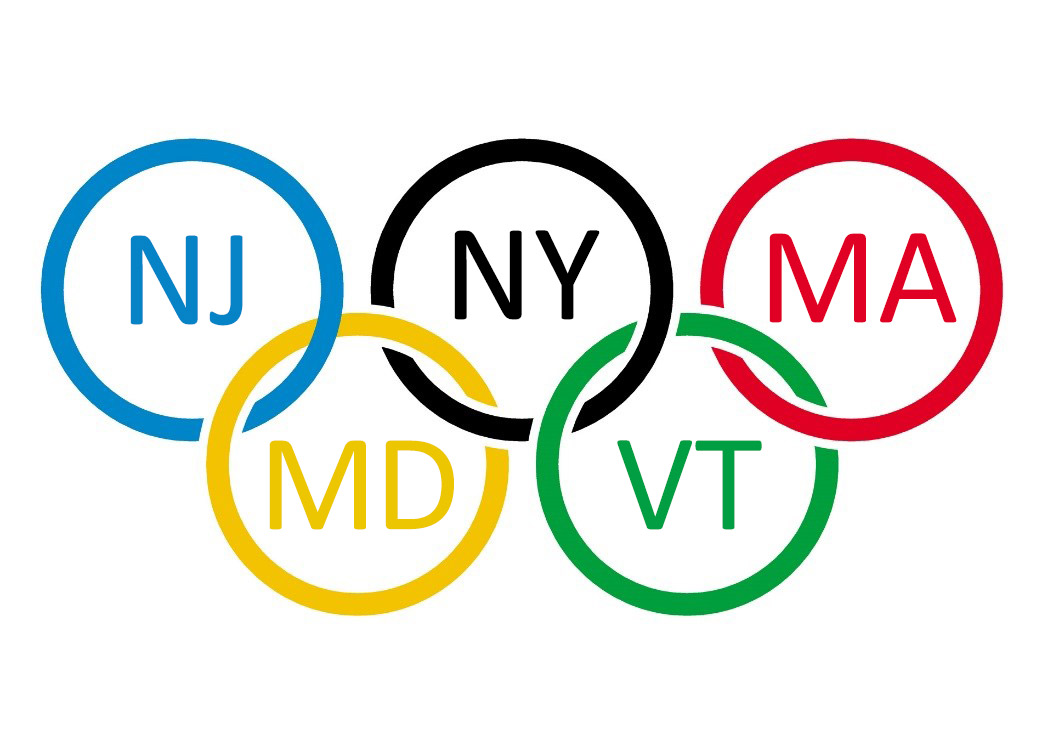By Kevin Rose | Wed, August 17, 16
This is the 2016 installment of this series. Click here for our previous update.
What are building energy codes?
Unlike automobiles, appliances, or consumer electronics, buildings constructed today will still have a considerable impact on U.S. energy use 50 to 100 years from now. Building energy codes, which are typically set at the state level, improve the financial return and durability of these long-term investments by setting minimum energy efficiency requirements resulting in lower utility bills and healthier working and living conditions in both new and renovated buildings. Advancing these energy codes over time to make our buildings more efficient is one of the most cost-effective and impactful strategies for reducing our country’s energy use and, in turn, our greenhouse gas emissions.
With Olympic fever in full swing worldwide, I took the opportunity to award some medals of our own to states in our region updating to more efficient energy codes:
Going for the Gold: Three More States Adopt Nation’s Most Efficient Code, Bringing Region’s Total to Five
This year, New Jersey, New York, and Massachusetts joined Vermont and Maryland as the first states in the region to adopt the 2015 International Energy Conservation Code (2015 IECC) – the nation’s newest and most energy efficient model code – as the basis of their updated state energy codes.
- New Jersey has reduced the anticipated energy use of its new commercial and residential buildings by roughly thirty and fifteen percent respectively since its new code went into effect in March.
- New York will become our first state to leap directly to the 2015 IECC from the 2009 version without making any major weakening amendments along the way when its new code becomes effective this October.
- Massachusetts is the first state in the region to adopt a base code stronger than the 2015 IECC! This new code goes into effect in January alongside the state’s newly updated stretch energy code, which should reduce energy use in some of the state’s largest buildings by an additional ten percent.
With these updates, our region is the clear leader in adoption of the country’s most up-to-date energy code.

Settling for Silver: One State Adopts the 2012 IECC
- In July Connecticut adopted the 2012 IECC, which will go into effect this October. While this update provides a healthy 15 or so percent efficiency improvement compared to the state’s previous code, we expect the state to continue to push for efficiency by pursuing the 2015 IECC shortly.
Taking Home Bronze but Eyeing Gold: More 2015 IECC Adoptions Coming Soon
Rhode Island and Maine are well on their way to adopting 2015 IECC:
- Rhode Island was on track to adopt the 2015 IECC this year until an additional cycle of review was added over the past couple months. The state is also in the process of developing its first stretch energy code.
- Maine has announced its intent to adopt the 2015 IECC for commercial buildings later this year, which would impact the portion of the state subject to MUBEC.
Pennsylvania and New Hampshire are expected to give an update to the 2015 IECC another try later this year:
- Pennsylvania is considering reopening the 2015 IECC adoption process to give the state another chance to update its energy code.
- New Hampshire is expected to reconsider adoption of the 2015 IECC after ultimately deciding against adoption earlier this year.
Finally, even more 2015 IECC adoptions are expected in 2017 in Delaware and the District of Columbia:
- Delaware will begin to review the 2015 IECC later this year.
- The District of Columbia has begun review of the 2015 IECC with the intent to update both its base energy code and green building code to put the District on a pathway towards implementing a zero net energy code in 2030.
Chasing Glory: What’s next after the 2015 IECC?
 By about this time next year, we expect our entire region to have adopted the 2015 IECC, if only partially. Here’s where they stack up now. While this is a testament to the leadership of our states, there are still more savings to be had through energy codes!
By about this time next year, we expect our entire region to have adopted the 2015 IECC, if only partially. Here’s where they stack up now. While this is a testament to the leadership of our states, there are still more savings to be had through energy codes!
The next version of the code – the 2018 IECC – will be finalized this fall, but it is not projected to provide much additional efficiency beyond the 2015 IECC (which itself did not push far beyond the 2012 version). If states, counties, or even individual cities and towns determine that the 2018 IECC does not push far enough towards reducing the energy use of their buildings, they can follow the lead of Massachusetts, New York, Vermont, Rhode Island, and the District of Columbia by implementing a stretch energy code, an overlay code that typically reduces energy use by an additional 10-20 percent.
NEEP’s Model Residential Stretch Code and Model Commercial Stretch Code provides jurisdictions with a starting place for developing such a stretch code to provide savings beyond the 2015 IECC and help begin the transition towards energy codes that will require zero energy capable construction.
For the latest status of energy code adoptions and news on other energy code happenings in the region, please visit our Codes Tracker and Buildings Bulletin Board. And see our Building Energy Codes webpage for more tools like the Model Stretch Codes and additional resources to encourage better compliance with these codes.
